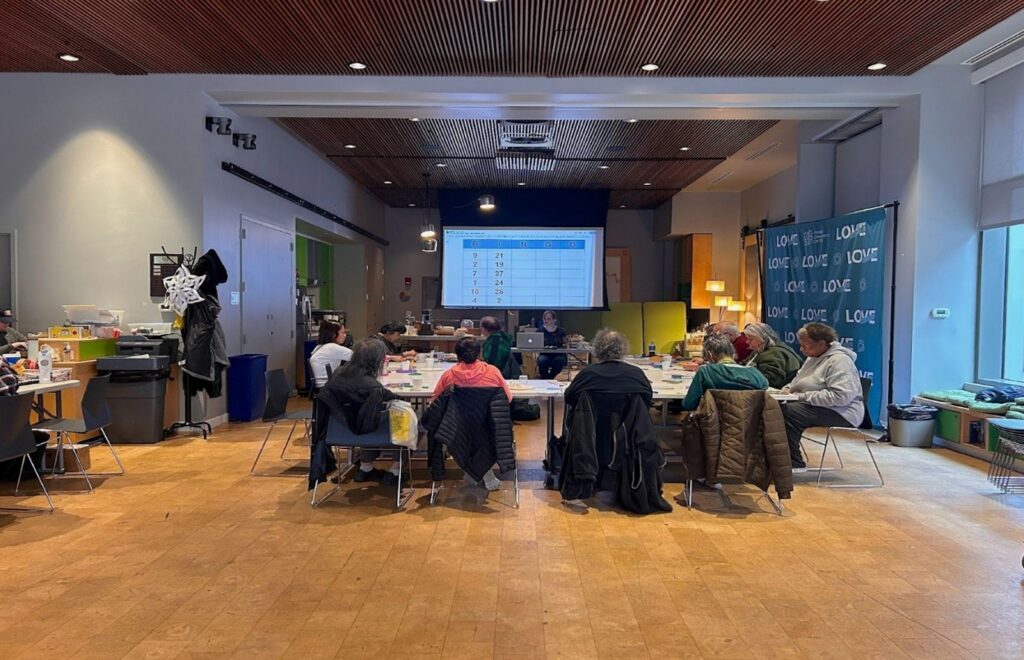Abstract:
Unhealthy alcohol and opioid use are growing problems among older adults who are at increased risk for harms from both alcohol and opioid use. Primary care practices can play an important role in addressing this problem, but need support in implementing evidence-based practices. The Agency for Healthcare Research and Quality has several initiatives to help primary care practices better diagnose and manage unhealthy alcohol and opioid use to improve health outcomes among older adults.
Key Words:
alcohol, opioids, substance abuse, primary care, Agency for Healthcare Research and Quality
Unhealthy alcohol and opioid use in older adults have increased substantially in the past decade. Between 2005 and 2013, the rate of binge drinking increased 19.2 percent, while the proportion of older adults with alcohol use disorder increased 23.3 percent (Han et al., 2017). Meanwhile, between 2010 and 2015, opioid-related inpatient hospital admissions increased 34 percent and Emergency Department visits increased 74 percent for older adults (Weiss et al., 2018).
While younger adults more frequently use illicit opioids such as heroin or non-prescribed fentanyl, older adults are more likely to be prescribed opioids by their clinicians. Overall, from 2015 to 2016, 19 percent of older adults filled at least one opioid prescription (Moriya and Miller, 2018). The high prevalence of chronic pain in older adults may partially explain these rates of opioid prescriptions; however, little evidence exists that long-term opioid use effectively manages chronic pain, while there is considerable evidence that long-term opioids carry a risk of adverse events and dependence. Amplifying these underlying trends, initial data since the beginning of the coronavirus pandemic suggest that unhealthy alcohol and opioid use has increased dramatically (Overdose Detection Mapping Application Program, 2020).
Older adults are uniquely at high risk for harms and complications from unhealthy alcohol and opioid use. Metabolic changes in older adults increase the likelihood of serious side effects such as overdose, physiologic dependence, delirium, respiratory suppression, and falls. Eighty percent of older adults have multiple chronic conditions and polypharmacy is common, increasing the risk of substance-disease, and substance-drug interactions (Gerteis et al., 2014).
On the other hand, older adults are at risk for harms from the abrupt discontinuing of chronic opioid therapy without consideration of physical dependence or other modalities to manage their chronic pain. Unhealthy alcohol and opioid use is associated with increased incidence of neurologic, hepatic, renal, psychiatric, and cardiovascular disease, injuries such as motor vehicle crashes, and falls. There also are socioeconomic effects such as increased burdens on family members and caregivers, and greater vulnerability to abuse, neglect, and exploitation. The coronavirus pandemic has increased socioeconomic vulnerabilities, including social isolation for older adults. Furthermore, despite increased risks of harm, older adults may not recognize their alcohol or opioid use to be unhealthy and, when recognized, be hesitant to seek treatment due to perceived stigma.
Finding Solutions in Primary Care
Primary care practices that provide integrated, accessible healthcare services, including prevention and health promotion, can play a unique role in screening, treating, and referral for unhealthy alcohol and opioid use in older adults. Older adults make more office visits than younger adults, and more than 80 percent of them have visited a healthcare professional in the past six months (National Center for Health Statistics, 2018). The higher frequency of visits serves as an opportunity for primary care clinicians to identify older adults who are at increased risk of harm from unhealthy alcohol and opioid use. Despite the potential for primary care to play an important role in addressing unhealthy alcohol and opioid use in older adults, many primary care clinicians have insufficient training in geriatric and addiction competencies. Others work in settings that lack the infrastructure to support this care, including the integration of behavioral health and primary care and links to community resources for collaborative and stepped care.
The U.S. Preventive Services Task Force (USPSTF), which provides evidence-based recommendations for clinical preventive services, recommends screening for unhealthy alcohol and drug use in adults in all ages (Curry et al., 2018; Krist et al., 2020). Screening in older adults is particularly important because the signs of unhealthy alcohol and opioid use, such as altered sensorium, personality changes, falls, and worsening control of chronic diseases that clinicians may recognize in younger adults could be attributed incorrectly to aging. Despite USPSTF recommendations, clinicians often do not screen older adults for unhealthy alcohol and opioid use. Commonly cited reasons include lack of time and resources, a belief that older adults have a lower prevalence of unhealthy alcohol and opioid use, and poor clinician training and preparedness in identifying and managing substance use disorders (Wakeman et al., 2016; McNeely et al., 2018). As a result, many older adults who may benefit from interventions for unhealthy alcohol and opioid use do not receive appropriate treatment, resulting in preventable harms from alcohol and opioid use.
Agency for Healthcare Research and Quality’s Response
The Center for Evidence and Practice Improvement at the Agency for Healthcare Research and Quality (AHRQ) seeks to improve care delivery and patient outcomes. The low adoption of evidence to address unhealthy alcohol and opioid use in older adults underscores the crucial need for implementation to improve patient outcomes. Increasing the uptake of this evidence in practice is neither easy nor straightforward. Practice change often requires new models of care delivery and organization. By integrating quality improvement with implementation science, we can learn how to effectively increase the use of the best evidence in practice, while also developing interventions for improvement that can be scaled and spread across the health system.
AHRQ is investing in two initiatives to support primary care practices in implementing evidence to address unhealthy alcohol and opioid use in older adults. AHRQ’s Academy for Integrating Behavioral Health and Primary Care provides a wealth of resources that support these efforts (AHRQ, 2020).
The AHRQ Unhealthy Alcohol Use Initiative
Officially launched in 2019, six research centers across the United States are each recruiting 125 primary care practices with an estimated total reach of more than 3.5 million patients. The centers support the practices’ implementation of evidence addressing screening and brief intervention for unhealthy alcohol use, treatment, and referral when needed for alcohol use disorder. The practices include proportions of older adults representative of the population where the practices are located. To adequately implement screening, brief intervention, treatment, and referral when needed in older populations, researchers note that adjustments to the training and other supports they offer the practices may be needed so that the practices can effectively engage with older patients. To accomplish this, some are including gerontology researchers on study teams, while others are establishing advisory groups. Anticipated outcomes will include changes in rates of screening, brief intervention, treatment, and referral, with appropriate subgroup analyses for older adults. Results are anticipated in 2023 (AHRQ, 2019a).
The AHRQ Opioids and Older Adults Initiative
In 2018, AHRQ published an analysis showing that hospitalizations and emergency department visits related to opioids were growing faster for adults older than age 65 than they were for younger age groups (Weiss et al., 2018). After consulting with other agencies within the U.S. Department of Health and Human Services, AHRQ launched a three-part initiative to reverse this trend and improve patient outcomes.
The first part is a technical brief to review the evidence on risk factors for opioid-related outcomes specific to older adults and on interventions to improve those outcomes. The review focused on defining a framework for organizing existing evidence and identifying important research gaps (AHRQ, 2019b).
‘Several other AHRQ projects can help to reduce the negative consequences of opioid use in older adults.’
The second part is a multifaceted quality improvement project to better understand and improve the management of opioid use in older adults in primary care. This project will describe current provider perceptions of the challenges associated with managing opioid use and misuse in older adults, create a compendium of tools and strategies for managing opioid use and misuse in older adults in primary care settings, and then support two waves of learning collaboratives of primary care practices to help them develop and test innovative approaches to improve outcomes in older adults. This project was launched in 2019 and the final report is expected in 2023.
The final part of the program is a trio of grants to develop, implement, evaluate, and disseminate models of care that improve the management of opioid use and opioid use disorder in older adults. These models are based in primary care settings, include socially at-risk older adults, and use evidence-based interventions and quality improvement strategies. After implementation, the models will be evaluated and the results will be disseminated. Results are expected in 2024.
In addition to the older adults’ initiative, several other AHRQ projects can help to reduce the negative consequences of opioid use in older adults. AHRQ funded a series of grants to expand access to medications for opioid use disorder in rural areas, which have an older population compared with urban and suburban areas and generally have lower access to geriatric, pain management, and addiction specialists. These grants concluded in 2019 and the results are available here (AHRQ, 2019c).
In addition, an AHRQ grantee developed Six Building Blocks, a team-based approach to improving opioid management in primary care, and recently an accompanying guide to address pain management issues in the context of COVID-19 (Parchman, 2020). Six Building Blocks provides an evidence-based quality improvement roadmap to help primary care teams implement effective, guideline-driven care for chronic pain and long-term opioid therapy patients. An interrupted time series analysis of the initial project implemented in twenty rural primary care clinics found that it led to a significantly faster decrease in high dose opioids and in the percentage of patients on long-term opioid therapy (Parchman et al., 2019).
Based on these results, AHRQ is funding a contract to develop materials and guidance to support the model’s successful implementation, and to expand it nationally to non-rural sites. The final report is expected in 2021.
AHRQ also has recognized the challenges that older adults face with the COVID-19 pandemic. These include the social isolation and loneliness, which may increase alcohol consumption and opioid use, and the challenges older adults face with adapting to telemedicine, as many primary care practices have moved away from face-to-face encounters. Investigators of AHRQ’s existing unhealthy alcohol and opioid use initiatives have recognized the need to adapt their projects to the particular challenges from the coronavirus pandemic.
Conclusion
Unhealthy alcohol and opioid use is an important and growing problem in the United States and has been further exacerbated by the current coronavirus pandemic. Primary care practitioners can play an important role in addressing this issue and helping patients at risk for adverse outcomes. This will require both implementation of evidence and evidence-based implementation. AHRQ’s work is integrating quality improvement with implementation science, so that as we implement the best evidence on managing unhealthy alcohol and opioid use in practice, we are developing the evidence for how to effectively implement, scale and spread this evidence. AHRQ’s work in increasing the capacity of primary care practices to manage unhealthy alcohol use and opioid use, misuse, and abuse will provide important lessons on how to do this effectively, while improving the care of many older adults across the nation.
Sebastian T. Tong, MD, MPH, is a senior staff fellow at the Center for Evidence and Practice Improvement at AHRQ in Rockville, MD. He may be contacted at sebastian.tong@ahrq.hhs.gov. Elisabeth U. Kato, MD, MRP, is a medical officer, Mary P. Nix, MS, PMP, is the deputy director for the Division of Practice Improvement, and Arlene S. Bierman, MD, MS, is the director; all of the Center for Evidence and Practice Improvement at AHRQ.
References
Agency for Healthcare Research and Quality (AHRQ). 2019a. “AHRQ Initiative to Reduce Unhealthy Alcohol Use.” tinyurl.com/y68pvpc5. Retrieved July 23, 2020. AHRQ. 2019b. “Prevention, Diagnosis, and Management of Opioids, Opioid Misuse and Opioid Use Disorder in Older Adults.” Retrieved July 23, 2020.
AHRQ. 2019b. “Prevention, Diagnosis, and Management of Opioids, Opioid Misuse and Opioid Use Disorder in Older Adults.” tinyurl.com/y664s2q8. Retrieved July 23, 2020.
AHRQ. 2019c. “Primary Care Medication-Assisted Treatment for Opioid Use Disorder Grantees.” tinyurl.com/yxnhlmys. Retrieved July 23, 2020. AHRQ. 2020. “The Academy: Integrating Behavioral Health and Primary Care.” Retrieved July 23, 2020.
AHRQ. 2020. “The Academy: Integrating Behavioral Health and Primary Care.” integrationacademy.ahrq.gov/. Retrieved July 23, 2020.
Curry, S. J., et al. 2018. “Screening and Behavioral Counseling Interventions to Reduce Unhealthy Alcohol Use in Adolescents and Adults: US Preventive Services Task Force Recommendation Statement.” Journal of the American Medical Association 320(18): 1899-909.
Gerteis, J., et al. 2014. “Multiple Chronic Conditions Chartbook. AHRQ Publications No Q14-0038.” tinyurl.com/yafnxd64. Retrieved July 17, 2020. Han, B. H., et al. 2017. “Demographic Trends of Binge Alcohol Use and Alcohol Use Disorders Among Older Adults in the United States, 2005-2014.” Drug and Alcohol Dependence 170: 198-207.
Han, B. H., et al. 2017. “Demographic Trends of Binge Alcohol Use and Alcohol Use Disorders Among Older Adults in the United States, 2005-2014.” Drug and Alcohol Dependence 170: 198-207.
Krist, A. H., et al. 2020. “Screening for Unhealthy Drug Use: US Preventive Services Task Force Recommendation Statement.” Journal of the American Medical Association 323(22): 2301-9.
McNeely, J., et al. 2018. “Barriers and Facilitators Affecting the Implementation of Substance Use Screening in Primary Care Clinics: A Qualitative Study of Patients, Providers, and Staff.” Addiction Science & Clinical Practice 13(1): 8.
Moriya, A. S., and Miller, G. E., 2018. “Any Use and Frequent Use of Opioids among Elderly Adults in 2015-2016, by Socieconomic Characteristics. AHRQ Statistical Brief #515.” Retrieved July 17, 2020.
National Center for Health Statistics. 2018. “Ambulatory Care Use and Physician Office Visits.” Retrieved July 17, 2020.
Overdose Detection Mapping Application Program. 2020. “The Consequences of COVID-19 on the Overdose Epidemic: Overdoses Are Increasing.” Retrieved July 17, 2020.
Parchman, M. L. 2020. “Six Building Blocks: A Team-Based Approach to Improving Opioid Management in Primary Care.” Retrieved July 23, 2020.
Parchman, M. L., et al. 2019. “Team-based Clinic Redesign of Opioid Medication Management in Primary Care: Effect on Opioid Prescribing.” The Annals of Family Medicine 17(4): 319-25.
Wakeman, S. E., Pham-Kanter, G., and Donelan, K. 2016. “Attitudes, Practices, and Preparedness to Care for Patients with Substance Use Disorder: Results from a Survey of General Internists.” Substance Abuse 37(4): 635-41.
Weiss, A. J. et al. 2018. “Opioid-related Inpatient Stays and Emergency Department Visits Among Patients Aged 65 Years and Older, 2010 and 2015.” Rockville, MD: AHRQ Statistical Brief #244, AHRQ.













